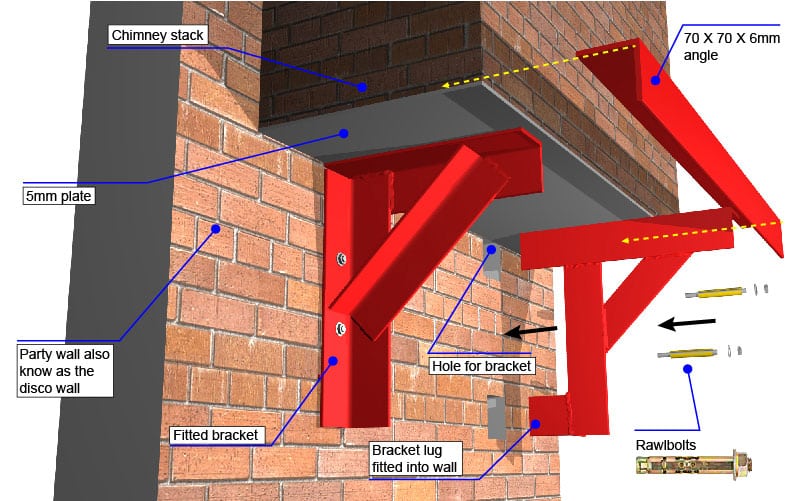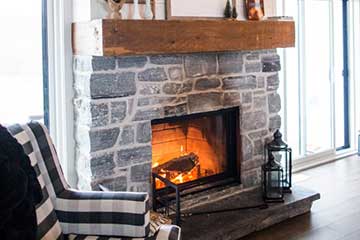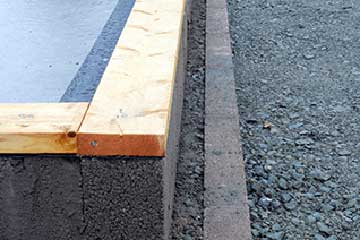What are Gallows Brackets Used for?
You may have read our article about what is a a chimney breast and what are the law requirements to ensure you have the correct agreements in place with your neighbour. If the chimney breast is on a party wall and can be removed. In this guide we are going to discuss why is crucial that the surviving chimney stack is adequately supported (by using gallows brackets) to avoid its collapse.
Gallows brackets are triangular, right-angled components, similar to shelf brackets, that offer support for your remaining chimney breast or chimney stack after removing an interior chimney breast. They are always used in pairs.
They are constructed of steel or iron and are available from builders’ merchants as well as specialised firms that may provide customised gallows brackets. Gallows brackets are often welded and then resin-anchored bolted to the wall, with a steel plate or metal angle spanning between them to hold the chimney.
When removing and/or changing a shared chimney stack on a party wall, several regulatory and legislative requirements must be met. These include, but are not limited to, Town and Country Planning Act 1990 planning approval, some building rules, and the Party Wall etc. Act 1996.
However, authorization from the local council’s planning department is not necessary if the intended work is to remove an internal chimney breast (i.e., the chimney below the roof line) or a chimney that is not part of a party structure. (for example, a bungalow).
With regard to building regulations, these only apply if the proposed works are of a structural nature. Thus, as a chimney forms a part of the structure of a building and a “Gallows Bracket” is considered to be a new structure that supports the remaining overhead load of a chimney breast and stack, building control approval is required from the local council.
Gallows brackets should be used when a steel beam (RSJ) is not being used*. They are a crucial mechanism for chimney breast support.
*Some conditions are applied. Please see “Gallows brackets should only be used if..”
Gallows brackets are used in pairs and attached to the party wall. Please see the below illustration.

*Copyright for image: All copyrights are associated with the source of the image: gallowbrackets.com
- The stack is not completely vertical
- The neighbours’ chimney breast on the other side of the party wall has not been removed (or partly removed)
- The party wall supporting the gallows bracket is a minimum of 225mm thick, in brickwork, and in sound condition.
- The maximum width of the chimney breast is less than 1200mm. For wider chimney breasts a structural engineer should be consulted.
- The chimney breast should project no more than 340mm into the room.
- The chimney is no more than two storeys high plus roof space.
- The relevant notices required under the Party Wall etc Act 1996 have been served on the adjoining owner (where the chimney is on a party wall)
Yes. The building regulations approval is required for the structural adjustment of removing a chimney breast and installing chimney breast gallows brackets.
IMPORTANT NOTE: Please do not mistake the porch gallow brackets, usually from timber or plastic, when comes to being used for a chimney breast or stack support. We highly recommend using properly designed brackets and fixings. If you are in doubt, ask for professional help.
IMPORTANT NOTE: Any gallows brackets or steel beams used should be provided with a minimum of 30 minutes fire protection (unless they are fully within the roof above the ceiling). The easiest way to achieve 30 minutes fire resistance to steelwork in domestic properties is to use two layers of 9.5mm plasterboard with a skim coat or a single layer of 15mm Gypsum fireline or similar fire-rated plasterboard.
Written by Danil P.
23th Aug 2021 (Last updated on 20th Oct 2022)
4 minute read





